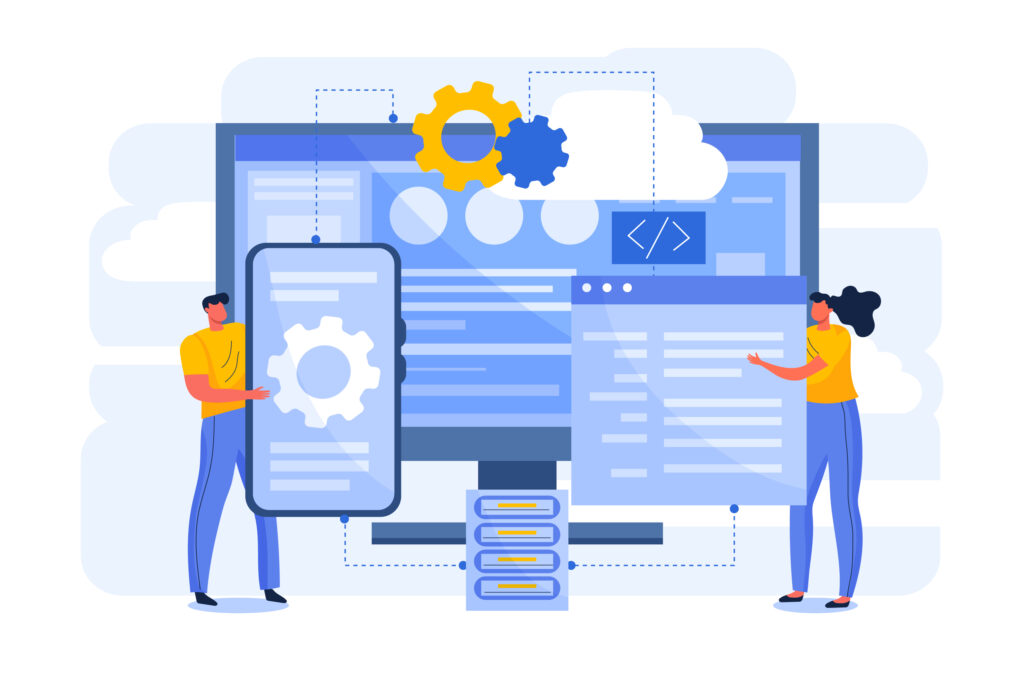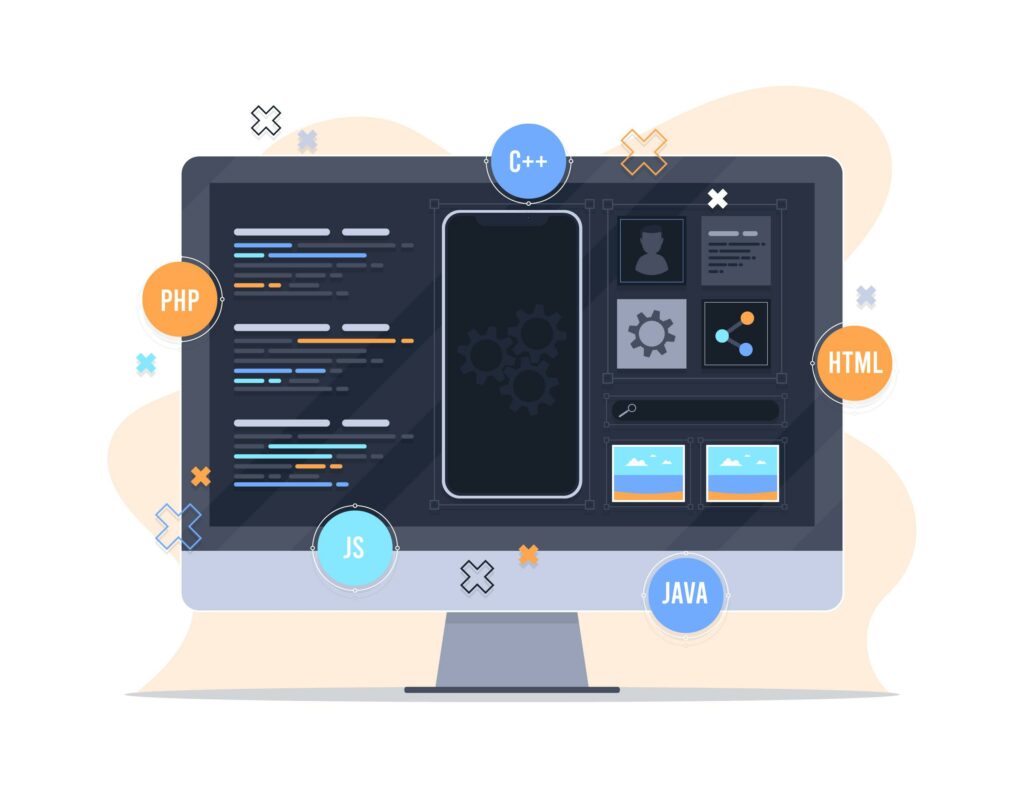Best Practices in Web Development
Web development is a diverse discipline that includes the creation and upkeep of websites and web applications. It encompasses various components such as web design, content creation, client-side and server-side scripting, as well as network security setup. Grasping its elements and following best practices is essential for providing high-quality web solutions.

Web development involves the activities related to building websites for the Internet or an intranet. This field includes several tasks, such as:
Front-End Development
This area focuses on designing the visual components of a website that users directly interact with, using languages like HTML, CSS, and JavaScript.
Back-End Development
This aspect deals with server-side programming, databases, and application logic, ensuring that all functionalities on the client side operate smoothly.
Full-Stack Development
This encompasses both front-end and back-end development, enabling developers to handle all facets of a web application. Web development can vary from building simple static pages to creating intricate web applications that handle data in real-time.
Key Features of Web Development

User-Centric Design
Successful web development focuses on user experience (UX), ensuring that websites are intuitive and easy to navigate.
Responsive Design
Websites should be flexible enough to adapt to different devices and screen sizes, delivering a consistent experience across desktops, tablets, and smartphones.
Performance Optimization
To keep users engaged, fast loading times are crucial. Developers utilize techniques such as image compression and code minification to enhance performance.
Security Measures
In today’s digital environment, safeguarding user data through secure coding practices and encryption is essential.
SEO Integration
Incorporating search engine optimization strategies improves a website’s visibility in search results, attracting more organic traffic.
Importance of Best Practices in Web Development

Following best practices in web development is essential for several reasons:
Quality Assurance
Best practices establish a framework that ensures high-quality results by standardizing processes across projects, leading to fewer bugs and issues after launch.
Enhanced User Experience
By emphasizing usability and accessibility, best practices create websites that are user-friendly and cater to a wide range of audiences, which can boost user satisfaction and retention.
Improved Performance
Adhering to established optimization guidelines can significantly enhance website speed and responsiveness, both critical factors for user engagement.
Security Enhancements
Implementing security best practices safeguards against vulnerabilities such as hacking attempts and data breaches, which are increasingly prevalent in web applications. Easier Maintenance Well-organized code and documentation simplify the process for developers when updating or modifying websites over time, reducing the risk of introducing new errors.
Better SEO Outcomes
Websites designed with SEO best practices are more likely to achieve higher rankings in search engine results, thereby increasing visibility and traffic.
Cost Efficiency
By reducing errors through structured planning and execution, businesses can save time and resources in the long run.
Adaptability to Change
The technology landscape is constantly evolving; following best practices enables developers to integrate new technologies efficiently without disrupting existing systems.
Key Web Development Practices

Adaptive Design for Various Devices
Responsive design is a vital component of contemporary web development, ensuring that websites operate effectively across different devices, including desktops, tablets, and smartphones. This adaptability is achieved through CSS media queries, which enable developers to apply distinct styles based on the device’s characteristics, such as screen size and resolution.
Flexible layouts are also essential to responsive design, allowing content to resize and rearrange dynamically. For example, a multi-column layout on a desktop may transform into a single-column layout on a mobile device, improving readability and usability. By maintaining a consistent appearance across all platforms, responsive design lowers bounce rates—users are less inclined to leave a site that performs well on their device—and boosts engagement, as visitors can easily navigate and interact with the content.
Streamlining Website Performance
Performance optimization is vital for ensuring user satisfaction and enhancing search engine rankings. Regularly monitoring website speed involves using techniques such as minimizing HTTP requests to decrease the number of files that need to be loaded, compressing images to reduce their file sizes without compromising quality, and utilizing Content Delivery Networks (CDNs) for more efficient content distribution.
By ensuring fast loading times, performance optimization has a direct effect on user experience; users are more likely to remain on a site that loads quickly. Additionally, since page speed is a key ranking factor in SEO algorithms, optimizing performance can lead to improved visibility in search results.
Boosting Visibility with SEO

SEO-friendly practices are essential for enhancing a website’s visibility in search engine results. This involves using semantic HTML, which aids search engines in better understanding the structure and meaning of web content. Optimizing meta tags, including title tags and descriptions, improves indexing and click-through rates from search results.
Maintaining clean URL structures also plays a significant role in achieving better SEO outcomes by making URLs more readable for both users and search engines. By following these best practices, developers can greatly increase the chances of attracting organic traffic, which is crucial for online success.
Ensuring Accessibility for All Users
Accessibility compliance guarantees that websites are usable by everyone, including individuals with disabilities. This involves implementing ARIA roles (Accessible Rich Internet Applications) that can be interpreted by assistive technologies, providing text alternatives for images (alt text), and ensuring that all interactive elements are navigable using a keyboard.
Creating an inclusive web experience not only expands your audience but also meets legal requirements in many regions. By prioritizing accessibility, developers can ensure that all users have equal access to the information and services available on their websites.
Consistency Across Browsers
Cross-browser compatibility is essential for ensuring that websites operate uniformly across various web browsers, such as Chrome, Firefox, Safari, and Edge. Different browsers may render HTML and CSS differently; therefore, comprehensive testing on multiple platforms is crucial to identify and address compatibility issues early in the development process.
This practice enhances user experience by guaranteeing that all visitors see the same content, regardless of their browser choice. It also helps prevent user frustration caused by broken layouts or malfunctioning features due to discrepancies between browsers.
Maintaining High Code Standards
Code quality and documentation are crucial elements of successful web development. Clean, well-organized code promotes easier collaboration among developers and simplifies long-term maintenance. Proper commenting within the code allows future developers to quickly grasp its purpose and functionality.

Effective documentation practices ensure that both current team members and future developers can easily navigate the codebase for updates or troubleshooting, minimizing the need for extensive onboarding processes.
Implementing Robust Security Measures
Security best practices are essential for protecting websites from vulnerabilities such as SQL injection and cross-site scripting (XSS). Key measures include using HTTPS encryption to secure data transmitted between users and servers, regularly updating software dependencies to address known vulnerabilities, and validating user inputs to prevent the processing of malicious data.
By prioritizing security, developers safeguard both their sites and users from potential threats, while also building trust among visitors who are increasingly concerned about data privacy.
Focusing on User Experience Design
User experience (UX) focus emphasizes designing with the end-user in mind. Conducting research and usability testing helps identify navigation or interaction flow pain points, allowing developers to create intuitive interfaces that prioritize clarity and ease of use.
A well-designed interface greatly enhances user satisfaction and retention rates; users are more likely to revisit a site where they had positive interactions and found it easy to navigate.
Continuous Testing and Iterative Improvements
Regular testing and maintenance are essential for identifying bugs or performance issues after a website’s launch. Integrating Continuous Integration/Continuous Deployment (CI/CD) practices automates testing processes, ensuring that updates do not introduce new problems while facilitating quicker development cycles.

Ongoing maintenance helps keep the website functioning smoothly while adapting to evolving user needs or technological advancements. This proactive approach guarantees continuous improvements in performance and user satisfaction over time.
[Want to learn more about Web Development Best Practices? Click here to reach us.]
Conclusion
By following these best practices, developers can ensure high-quality, user-friendly websites that meet both user expectations and industry standards. At Bobcares, our web development support services are designed to help businesses achieve these goals by providing expert assistance in creating websites that prioritize user experience, cross-browser compatibility, and security. Our team is dedicated to continuous testing and iterative improvements, ensuring optimal website performance and adaptability as technology evolves.
With Bobcares web development support, businesses can stay ahead in a competitive market, delivering innovative solutions that resonate with audiences while fostering trust and engagement. This commitment to excellence ultimately drives organic traffic and contributes to long-term success.







0 Comments